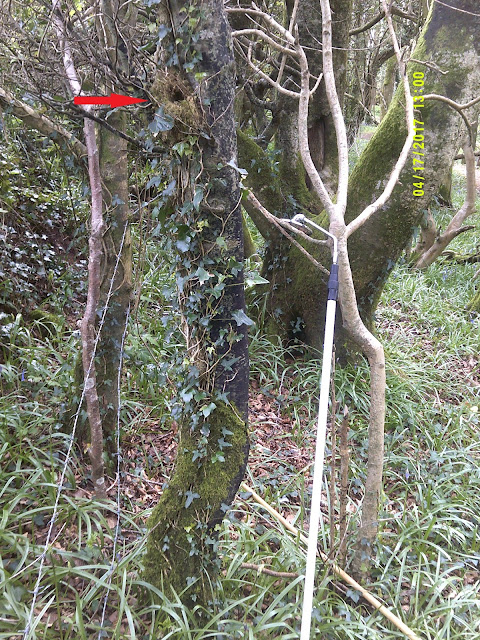Wren nest in wall
general view showing how they can stand out
This Wren nest could be an old one or this years at N3. Note the entrance hole is at the back
general view of the nest above. Stands out quite well.
There is no need to visit a nest every day. Well planned visits can provide good quality data and free up time to find new nests such as -
The Long-tailed Tit nest above was found by watching the birds back to a gorse bush after hearing their alarm calls on the 25th March. A further visit on the 4th April revealed 5 eggs that were cold, ie - incubation had not started so the clutch was probably incomplete. Although LT Tits can lay up to 15 eggs usual clutch size is 6-9 so the next visit was timed for 5 days later. This visit demonstrated that 6 eggs had been laid meaning that incubation which would start with the last egg should have started on the 5th April. Incubation can be expected to last 14-17 days so it is likely I will check the nest again on 21st/22nd April.
Also two visits even when things haven't quite gone right can provide lots of data even if the nest only had contents on one visit such as -
This Song Thrush nest was found on the 9th April with 4 blind (BL) and naked (NA) young in the nest. Although the nest was empty on the second visit 7 days later due to predation the age of the young on the first visits allows a rough estimate to be made for when the first egg was laid and the first young were hatched.






No comments:
Post a Comment